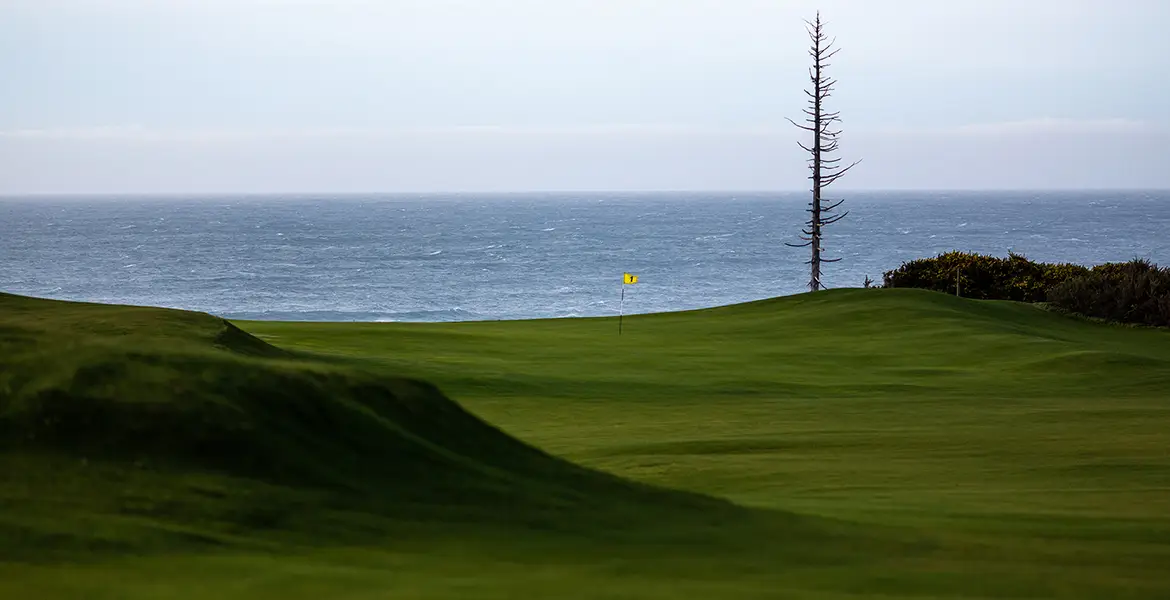I started playing golf at the age of seven, and as one of six sons I naturally started with an older brother’s hand-me-down clubs. Over the years, my clubs gradually lengthened and changed, but I never owned a set fit for my swing. Despite this, I hit my irons pretty well, on a good day my drives go about 280 yards, and, if I’m concentrating, I break 80. So like many other golfers, I’ve wondered “Why do I need to get fit for clubs?”
Here’s why.

What is Club Fitting?
Let’s start with some basics. Club fitting is a process in which a trained fitter creates a set of clubs that is perfectly matched to your swing. To do that, every aspect of the club is studied—from head and shaft to grip, loft, lie angle, and feel.
Club Champion is the fitting company closest to me here in the Carolinas, but they have locations throughout the U.S. It offers what is called “agnostic fitting,” meaning it has no allegiance to any one manufacturer and can offer hundreds of clubheads and shafts from dozens of brands. The idea is that its fitter will create the best clubs for you, regardless of who makes them.
Being brand agnostic is the biggest point of difference between Club Champion and your pro shop or most local golf stores. Pros have relationships with certain companies and your local golf store has inventory they’re looking to move. Plus, Club Champion generally provides a much more in-depth and detailed fitting than you could find at a golf store.
I chose to be fit for irons and a driver, a process that took just under three hours. You can also get fit for fairway woods, hybrids, wedges, and putters.

The Fitting
The fitting process at Club Champion is similar—but not necessarily the same—to what you’ll find at most agnostic fitters (Hot Stix, Cool Clubs, True Spec Golf, and others). The process starts by hitting your current clubs and using a launch monitor to track and store your distance, spin rate, and many other data points. This provides a baseline: Subsequent clubs and shafts are measured against it.
The fitter starts by selecting the same, or very similar, clubhead to what you are currently playing and then experiments with shafts of different weight, length, flex, and flex point until finding the best one for that part of your game. Once the shaft is set, the fitter does the same with clubheads until the data uncovers the best option.
The most interesting discovery was that my current irons are too long, explaining my typical miss, hitting it heavy. I’m 5’9” and traditional thinking dictates that I need standard-length shafts; a half-inch-shorter shaft improved my accuracy with no loss of distance. With my driver the shaft length wasn’t a problem but its weight was: The 75-gram, X-flex shaft was too heavy for my swing speed and affected accuracy. A 65-gram shaft, same flex, produced more distance and eliminated my left miss.
I also learned about the importance of distance gapping. As iron lofts get ever stronger (one reason pros are hitting 190-yard 9-irons), it has really affected golfers’ wedge play. The new TaylorMade P790 irons that the fitter and I agreed were my best fit have very strong lofts: Its pitching wedge is 45 degrees, what a typical 9-iron was a decade ago. The set’s pitching wedge goes 135 yards and the next wedge in my set is a 52-degree gap wedge that goes 100 yards. To close that gap, I’m going to upgrade to new wedges at 48, 53, and 58 degrees.


Buying
Once you’re fit, there is no obligation to buy. Another golfer I met in the Club Champion parking lot told me he went in for a driver fitting and was told that what he was currently using performed great against newer offerings. The fitter said there was no reason to buy a new driver, so the customer only paid for the fitting (see costs below).
If you do decide to buy, Club Champion orders the component parts, assembles them in its Chicago headquarters, and mails them to you. It usually takes 2–3 weeks from fitting to delivery.
Club Champion charges the same price for a club as any shop or big box store. The difference is that Club Champion removes the stock shaft, which in most cases is an average quality shaft ordered in bulk by the manufacturer, and puts in the right one for you. Shafts can significantly up the cost of your completed set since iron shafts usually range from $25–$75 each, driver shafts from $100–$400 and even higher.
Check the Club Champion website for the exact cost of a fitting without buying the clubs, but expect to pay from about $80 for a wedge fit to $350 for the full bag. Again, this is just for the fitter’s time and expertise; the price of the clubs is extra. The website also shows occasional deals.
Club Champion’s policy is that if your expectations aren’t met when you take your new set to the course, you can bring them back within 90 days and the fitter will work with you again to make them perfect.
So… Is it worth it?
Going by my experience, the answer is yes. Just the peace of mind and confidence you have in your “perfect” set makes it worthwhile. But more than that, my fitting dramatically helped my game by fixing my typical misses with both irons and the driver. And while it’s something of a cliché to say this, it really is true: Clubs aren’t cheap and how you play is important, so why not get the right set for you?
But club fitting does have one downside: You’ll never be able to blame the clubs again.







Joke